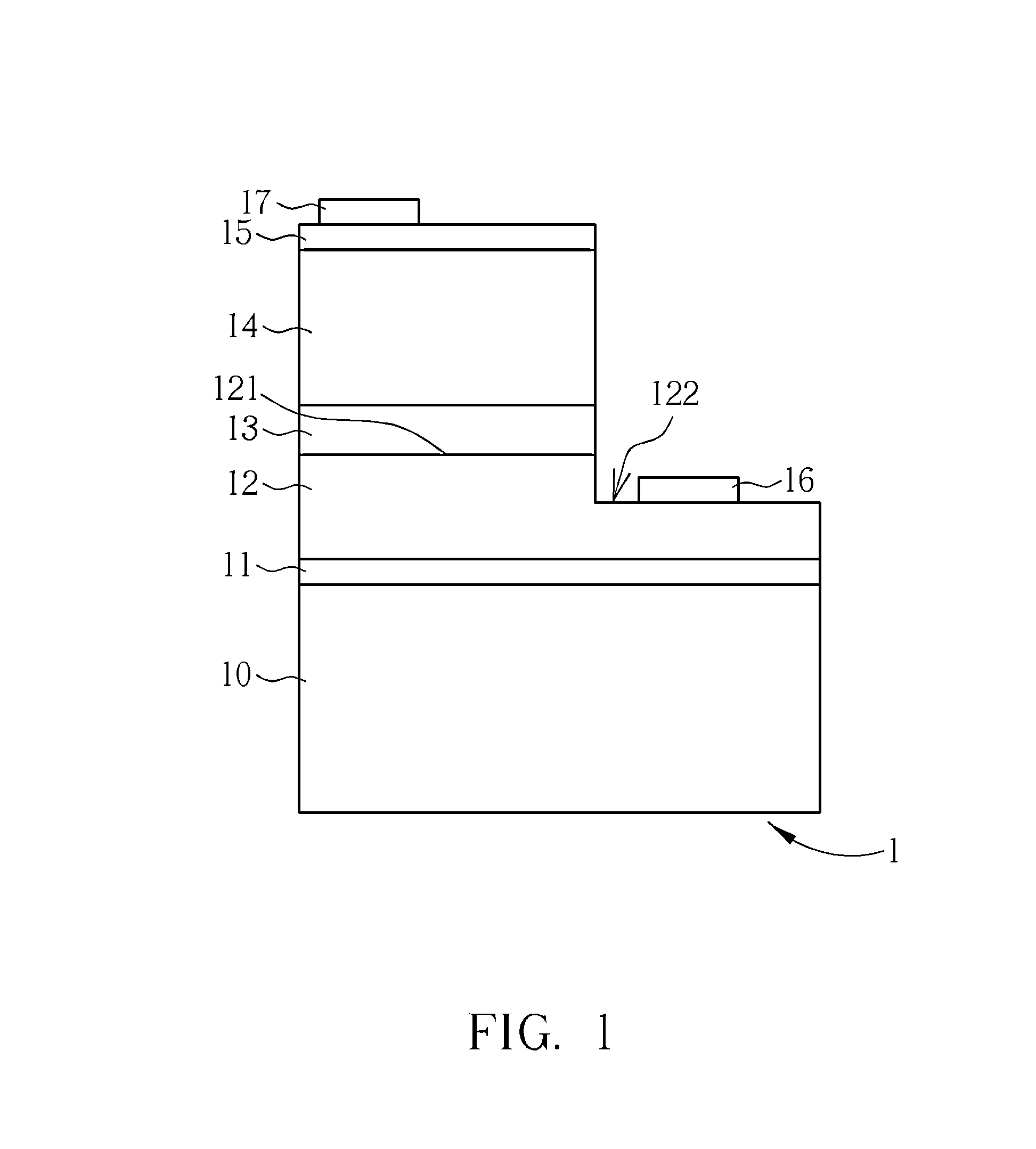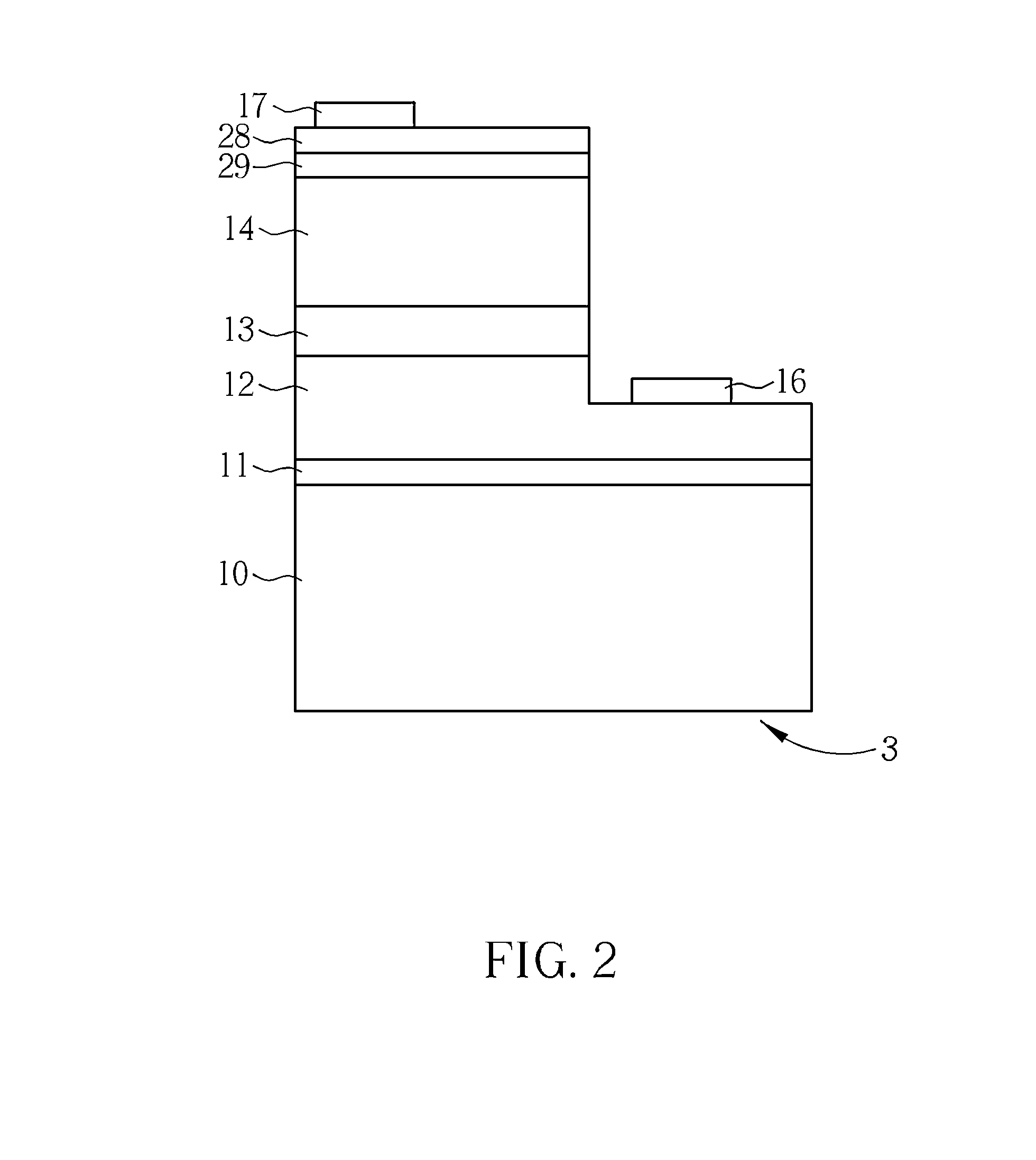Nitride-based light-emitting device
a technology of nitride and light-emitting devices, which is applied in the direction of semiconductor/solid-state device manufacturing, semiconductor devices, electrical apparatus, etc., can solve the problems of inability to increase manufacturing efficiency, inability to reduce dislocation density, and affect the quality of conventional nitride-based light-emitting devices
- Summary
- Abstract
- Description
- Claims
- Application Information
AI Technical Summary
Benefits of technology
Problems solved by technology
Method used
Image
Examples
first embodiment
[0020]Please refer to FIG. 1, which illustrates a schematic diagram of a nitride-based light-emitting device 1 with an AlGaN buffer layer according to the present disclosure. The nitride-based light-emitting device 1 includes a sapphire substrate 10, an AlGaN buffer layer 11 formed over the sapphire substrate 10, a nitride-based stack layer 12 made of n-type semiconductor and formed over the AlGaN buffer layer 11 with an epitaxy area 121 and an n-type electrode contact area 122, a multi-quantum well light-emitting layer 13 made of nitride materials like GaN / InGaN formed over the epitaxy area 121, a nitride-based stack layer 14 made of p-type semiconductor and formed over the multi-quantum well light-emitting layer 13, a metal transparent conductive layer 15 formed over the nitride-based stack layer 14, an n-type electrode 16 formed over the n-type electrode contact area 122, and a p-type electrode 17 formed over the metal transparent conductive layer 15.
[0021]A method for forming th...
fourth embodiment
[0080]Please refer to FIG. 11, which illustrates a schematic diagram of a nitride-based light-emitting device 7 with an AlN buffer layer according to the present disclosure. The structure of the nitride-based light-emitting device 7 is the same as the nitride-based light-emitting device 3. The difference between the nitride-based light-emitting device 3 and the nitride-based light-emitting device 7 includes the material of the buffer layer 11 of the nitride-based light-emitting device 7 is AlN.
[0081]In addition, the AlN buffer layers of the nitride-based light-emitting devices 5 and 7 can be replaced with other binary nitride-based buffer layers, such as GaN or InN buffer layer.
[0082]In the nitride-based light-emitting devices 1 and 5, a transparent oxide contact layer can be formed over the nitride-based stack layer instead of the metal transparent conductive layer of the nitride-based light-emitting device 1 for increasing light-emitting efficiency owing to the higher light transm...
PUM
 Login to View More
Login to View More Abstract
Description
Claims
Application Information
 Login to View More
Login to View More - R&D
- Intellectual Property
- Life Sciences
- Materials
- Tech Scout
- Unparalleled Data Quality
- Higher Quality Content
- 60% Fewer Hallucinations
Browse by: Latest US Patents, China's latest patents, Technical Efficacy Thesaurus, Application Domain, Technology Topic, Popular Technical Reports.
© 2025 PatSnap. All rights reserved.Legal|Privacy policy|Modern Slavery Act Transparency Statement|Sitemap|About US| Contact US: help@patsnap.com



